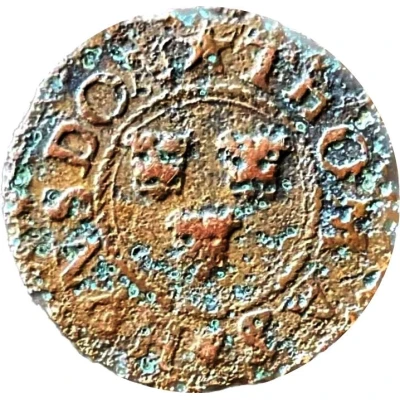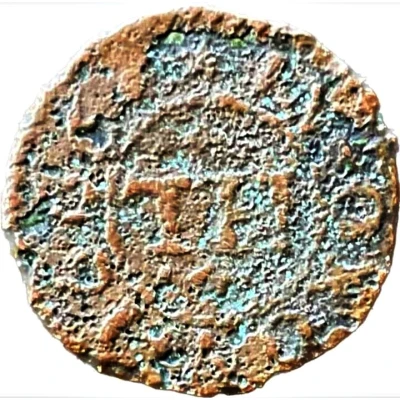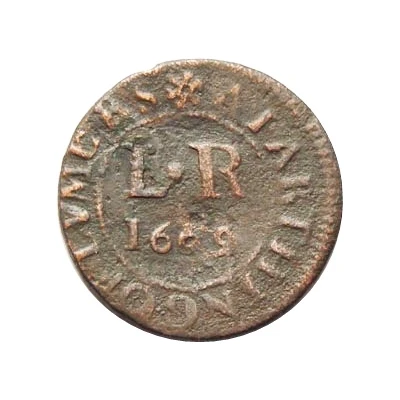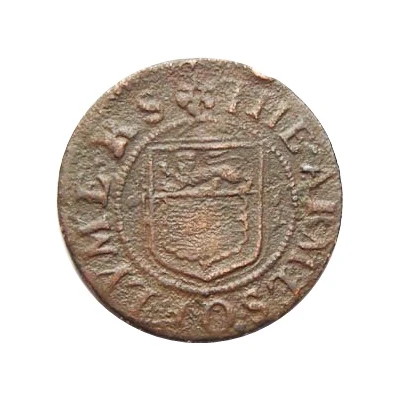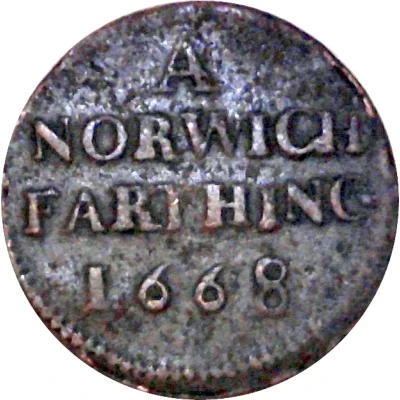
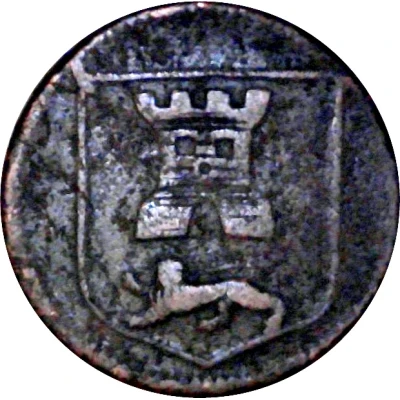

© Fluke
Farthing - Norfolk Norwich / Town
| Copper | 2.9 g | 21 mm |
| Issuer | England (United Kingdom, British Overseas Territories and Crown Dependencies) |
|---|---|
| Type | Token |
| Years | 1667-1670 |
| Value | 1 Farthing (1⁄960) |
| Currency | English Trade Tokens (1648-72) |
| Composition | Copper |
| Weight | 2.9 g |
| Diameter | 21 mm |
| Thickness | 0.5 mm |
| Shape | Round |
| Orientation | Medal alignment ↑↑ |
| Demonetized | Yes |
| Updated | 2024-10-09 |
| Numista | N#18013 |
|---|---|
| Rarity index | 78% |
Reverse
Arms of the city of Norwich: a lion rampant facing left surmounted by a castle triple-towered argent, all within a flat-topped shield.
Edge
Plain
Comment
These private trade tokens were produced out of necessity due to the lack of regal coinage. Following the Civil War, which saw the reigning monarch, Charles I, beheaded and a period of Commonwealth government under Oliver Cromwell and later his son, Richard, the monarchy was finally restored in 1660 when Charles II ascended to the throne. At the time these Norwich tokens were struck, there had already been some 20 years without small denomination regal coinage and it was not until 1672 that the first Charles II farhings and halfpennies were issued.Two obverse variants of the 1668 dated token exist:
B-W#226 - the letter A is partly over the R and partly over the W of Norwich;
B-W#227 - the letter A is exactly over the letter W of Norwich;
Catalogues: M. Dickinson 225; Dies as Norweb 3115.
Interesting fact
One interesting fact about the Token Farthing - Norfolk (Norwich / Town) 1667-1670 from England is that it was issued during a time of great economic turmoil in the country. The coin was minted during the reign of King Charles II, who had recently reopened the mint at Norwich to help alleviate the shortage of small change in circulation. The coin's design features the image of a crowned lion on one side and the letters "NOR" on the other, signifying its origins in Norwich. Despite its small denomination, the Token Farthing was an important part of everyday transactions in 17th century England, and its issuance helped to stabilize the economy during a period of economic uncertainty.
